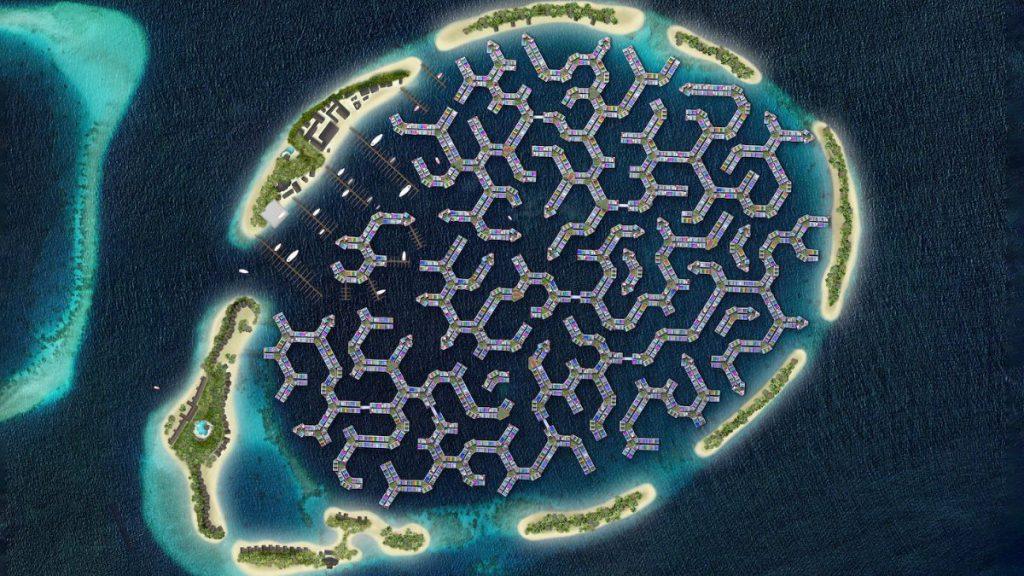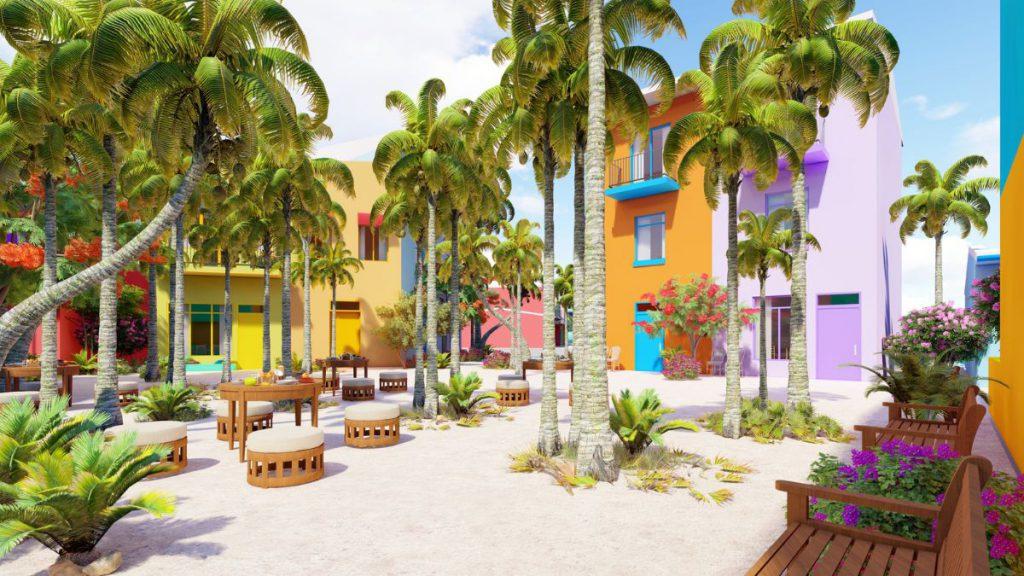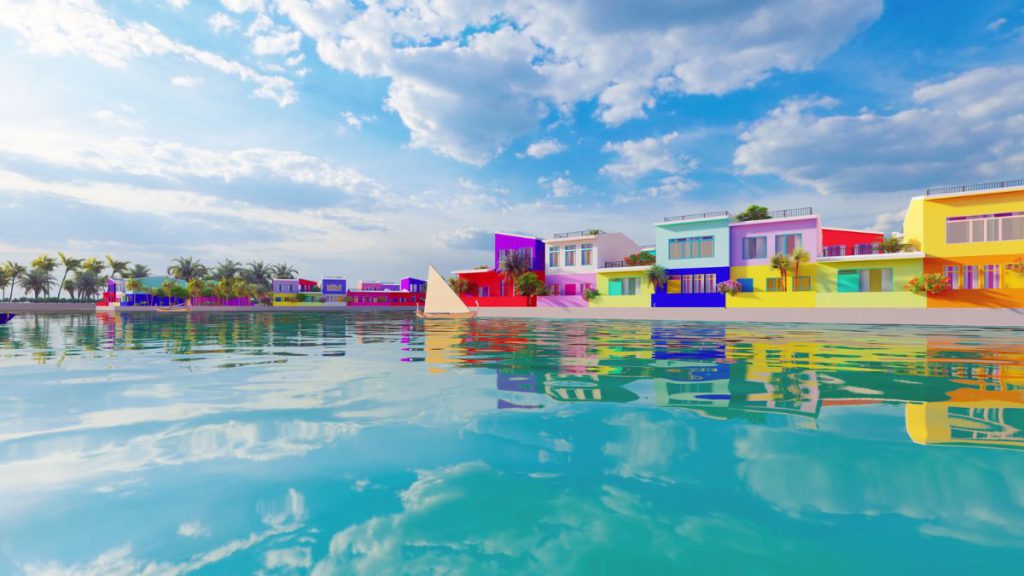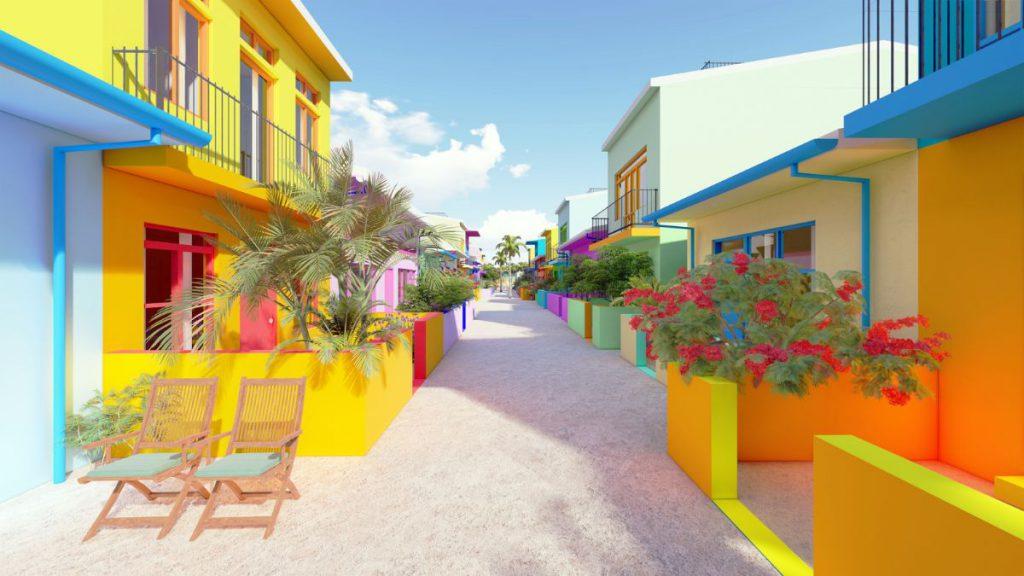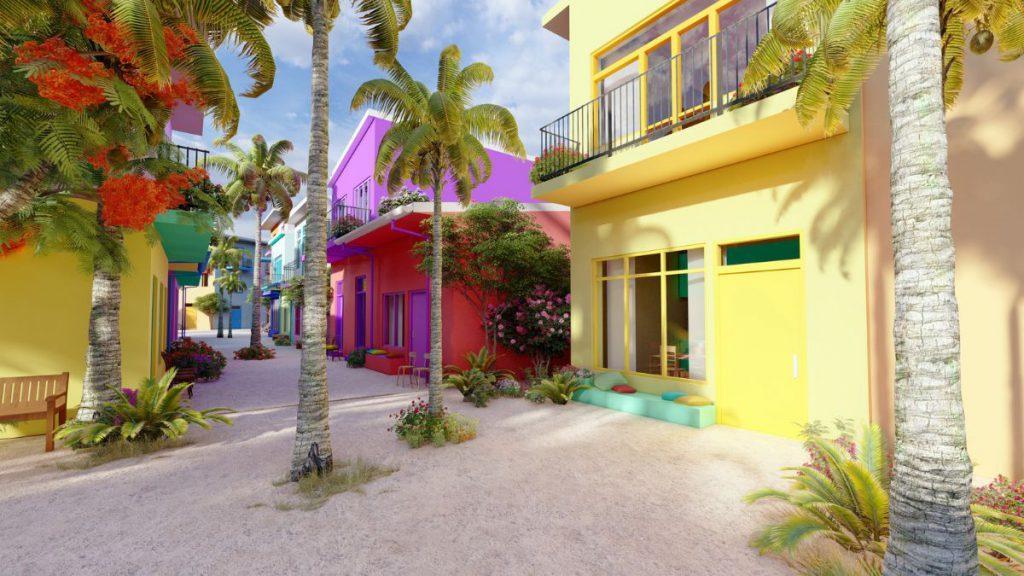The world’s first floating city
From climate refugees to climate innovators – that is the vision of developer Dutch Docklands and the architects from Waterstudio for the people of the Maldives. Their Maldives Floating City, the first floating island city in the world, will be able to house around 20,000 people.
It’s a race against time – as sea levels continue to rise, so does the risk of the Maldives becoming engulfed by water. At present, this group of almost 1,200 islands, consisting primarily of coral sand, is on average one metre above sea level. Around 200 of the islands are inhabited, while 100 more are used as hotel islands.
Maldives Floating City: a solution for the island paradise?
However, sea levels continue to rise every year. Even though locals say that the shores have always been battered by wind and water, erosion has been thrown out of balance over time, with increasing storms and floods. Possible solutions for the 26 atolls in the Indian Ocean have been explored since the problem was identified, but the Maldives Floating City is now a reality.
Designed by Dutch Docklands together with architectural firm Waterstudio, Maldives Floating City is making people sit up and take notice. The first residential units are already on view, and should be ready by 2024.
The island state’s government gave the project its approval in 2022. With a design modelled on brain corals, the city is contractually regulated in the form of a public-private partnership (PPP).
Vibrant hope
With its colourful low-rise buildings, Maldives Floating City (MFC) offers a way to survive on the water with resistant, environmentally friendly floating structures. After all, the sea level is rising by around 3.1 millimetres a year.
The predictions are vague, ranging from between ten and 100 centimetres by 2100 – but a maximum of 100 centimetres is far too much. 80% of the country is less than a metre above sea level. And the capital Malé is one of the world’s most densely populated cities.
Close to nature
The new city will be “close to nature”, with “roads” and canals. The structures give it the appearance of a real brain coral and the same “efficient organization”. Dutch Docklands also feels that the shape of the Maldives Floating City will raise the international profile of the Maldives as a centre for coral conservation.
MFC will have several thousand low buildings. Located near Malé and a ten-minute boat ride from the international airport, it will float in a 200-hectare lagoon in the Indian Ocean – where it will be able to adapt to the changing sea level.
Anyone who is interested in buying one of the apartments can register on the website. Here, Maldives Floating City is presented as the “world’s first true floating island city”. The legal status has also been clarified and secured by title deeds for buyers.
Other types of buildings are also being planned, including hotels, shops, restaurants, boutiques and a marina. Next to these will be public buildings like a hospital, school and government building.
Redirecting fate
Maldives Floating City aims to be the “backbone” of future floating cities. The developers at Dutch Docklands and the architects at Waterstudio hope this will allow the Maldivians to present themselves not as climate refugees but as climate innovators.
The new development is conceived as a flexible city with an intelligent power grid that can respond to changing demands and weather conditions. Apart from the sustainable, innovative technologies, ecological best practices have been used to replenish and protect the marine ecosystem.
Blue habitats thanks to artificial coral reefs
The unique city creates “blue habitats” both above and below the surface of the water, which in turn encourage coral growth. This is because artificial coral reefs made from glass foam are fitted underneath the structures. The surrounding coral reefs serve as natural breakwaters for the city, stabilizing it and providing added security for its inhabitants.
As the experts at Dutch Docklands explain, a city that consists of thousands of units can only be built and function if the infrastructure and units are part of a modular system. This is the only way to ensure quality, standardization, short construction time, cost control and efficient maintenance.
The aim is to use as little energy as possible and, thanks to the “green/blue energy”, any surplus energy will be fed into the grid. Power comes mainly from solar energy generated on the island city itself. And cold deep-sea water will be pumped into the lagoon as an alternative to air conditioning.
The supply and distribution of goods, storage, and controlled waste treatment and disposal is designed to be as resource- and environmentally friendly as possible. In addition, the shadow impact of the hexagonal floating structures ensures that enough sunlight reaches the seabed. The anchoring systems must also be rigid yet flexible enough to allow MFC to withstand extreme outside forces.
Residence permit on purchase
To facilitate financing and insurance, the floating houses and other buildings are treated as real estate from a legal perspective. Non-nationals can receive a residence permit on purchasing an apartment. The aim here is to invite the international community not just to sample the Maldivian lifestyle, perfect weather and tropical environment but also to come and settle on the Maldives.
Up to 20,000 people could live in Maldives Floating City in the future. According to media reports, every house will measure 100 square metres and have a landing stage on the front and a terrace on the roof. Prices are likely to be upwards of US$ 250,000.
Car-free “boat community”
The local culture and history of the seafaring nation is shaped by its close relationship with the sea and life on the water. The city’s character is akin to a boat community that uses canals as the main infrastructure for logistics and gateways, reducing movement on land to walking and cycling on natural white sandy paths. No cars are allowed, just bicycles and noiseless electric scooters or buggies.
Having paid the fee of one million US dollars stipulated by law, the developers received a building permit from the Ministry for Tourism. At a ceremony in Malé in June 2022, Dutch Docklands Maldives obtained the final signatures needed to start construction work. The floating city will contain a total of 5,000 residential units.
Viewing permitted
The first block of floating houses has been transported to the lagoon and is available for viewing. All work is expected to be completed in four to five years.
Maldives Floating City is part of a series of floating city designs that includes Oceanix Busan by architectural firms BIG and Samoo, and the technology company Oceanix, and has already been in development for over a decade.
Shortlisted Futura project at the MIPIM Awards 2022
According to its own statistics, Waterstudio has designed more than 300 floating houses, offices, schools and health centres all over the world in the last two decades. The design was one of the finalists for the best Futura project at the MIPIM Awards 2022, often dubbed the “Asian Oscars for global development”.
Dutch Docklands was founded by architect Koen Olthuis and building contractor Paul van de Camp. The project is based on floating technology from the Netherlands, where flood-safe architecture has been researched and developed for centuries.
The Netherlands have long been home to floating parks, a floating dairy farm, a floating office building, the headquarters of the Global Center on Adaptation (GCA) and the floating district of Waterbuurt in Amsterdam.
Similarly innovative approaches can also be found in the CPH Living floating hotels in Copenhagen and the Off Paris Seine in France, and in a series of floating islands in the Baltic Sea developed by Dutch company Blue21.
Text: Linda Benkö
Translation: Rosemary Bridger-Lippe
Renderings: Waterstudio/Dutch Docklands Maldives
